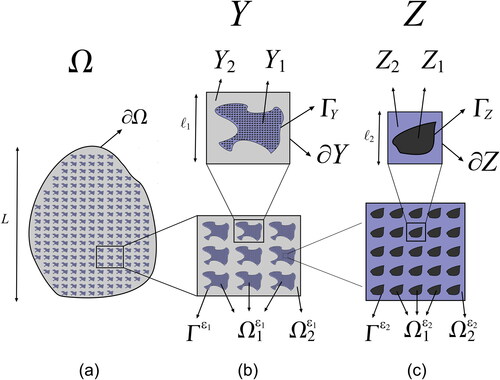Figures & data
Figure 1. (a) Macroscale: viscoelastic heterogeneous material. (b) -structural level. Mesoscale: quasi-periodic cell. (c)
-structural level. Microscale: quasi-periodic cell. The inclusions do not intersect the boundaries.

Figure 2. The hierarchical structure of the dermis similar to Figure 3(v–vi) of Sherman et al. [Citation39]. The figure presents a relation with the , where (b) and (c) correspond to (i) and (ii), respectively.
![Figure 2. The hierarchical structure of the dermis similar to Figure 3(v–vi) of Sherman et al. [Citation39]. The figure presents a relation with the Figure 1, where Figure 1 (b) and (c) correspond to Figure 2 (i) and (ii), respectively.](/cms/asset/5e5bf2d6-92a2-411a-a0e5-b05aadec6120/umcm_a_1722872_f0002_c.jpg)
Table 1. Mechanical properties for the constituents of the dermis (see Ref. [Citation27, Citation37]).
Table 2. Coefficients of the Prony series for a mice dermis (see Ref. [Citation36]).
Table 3. Computation of the effective relaxation modulus and the effective creep compliance for the dermis. The input parameters are given in and .

